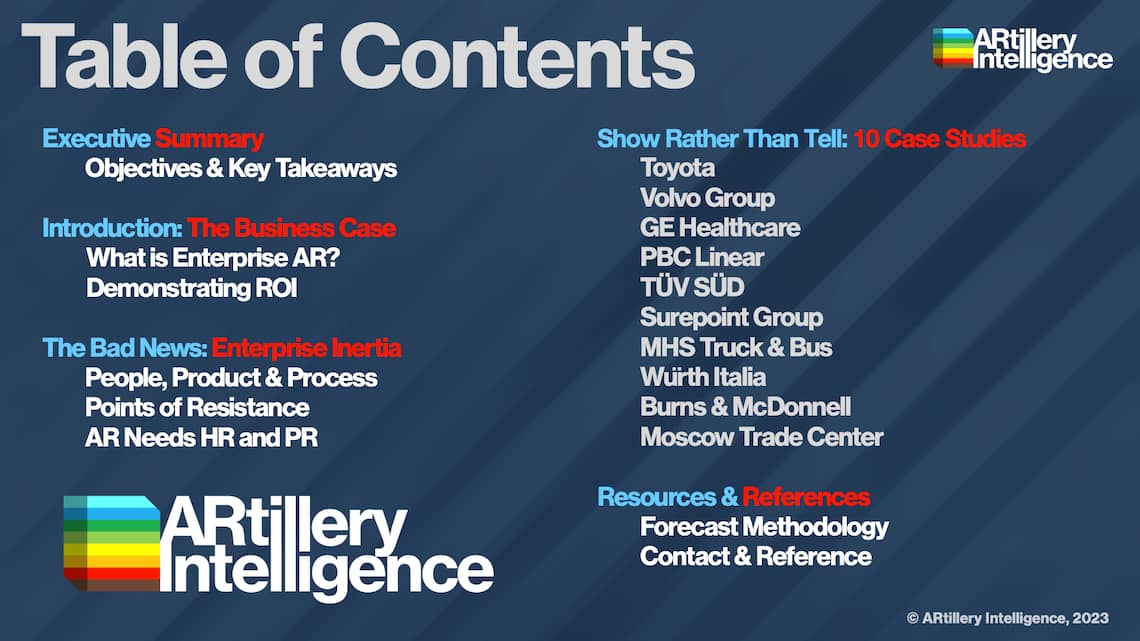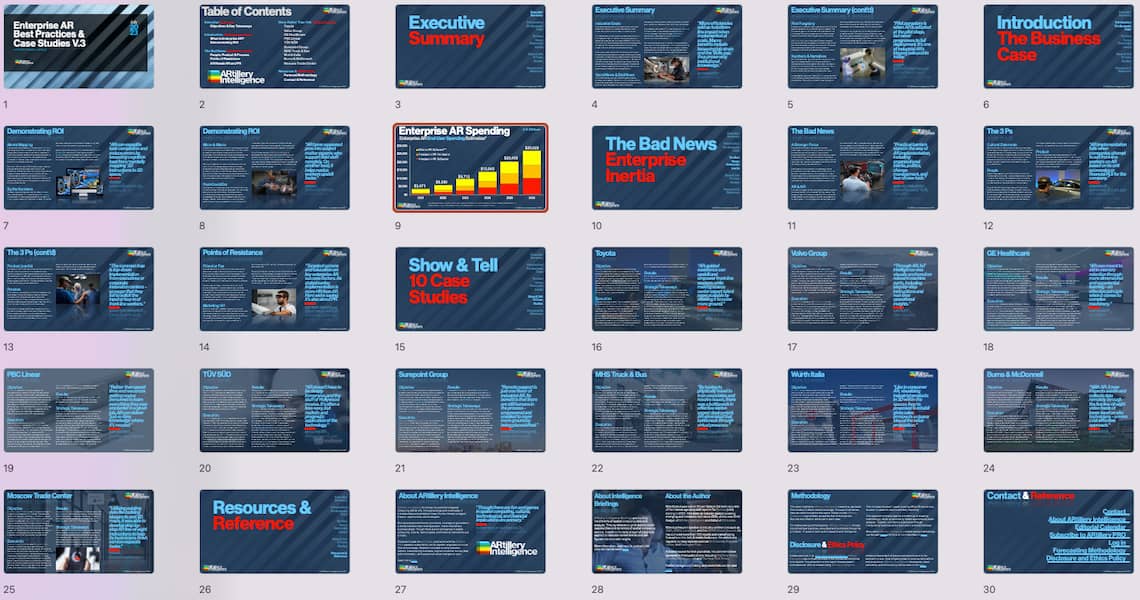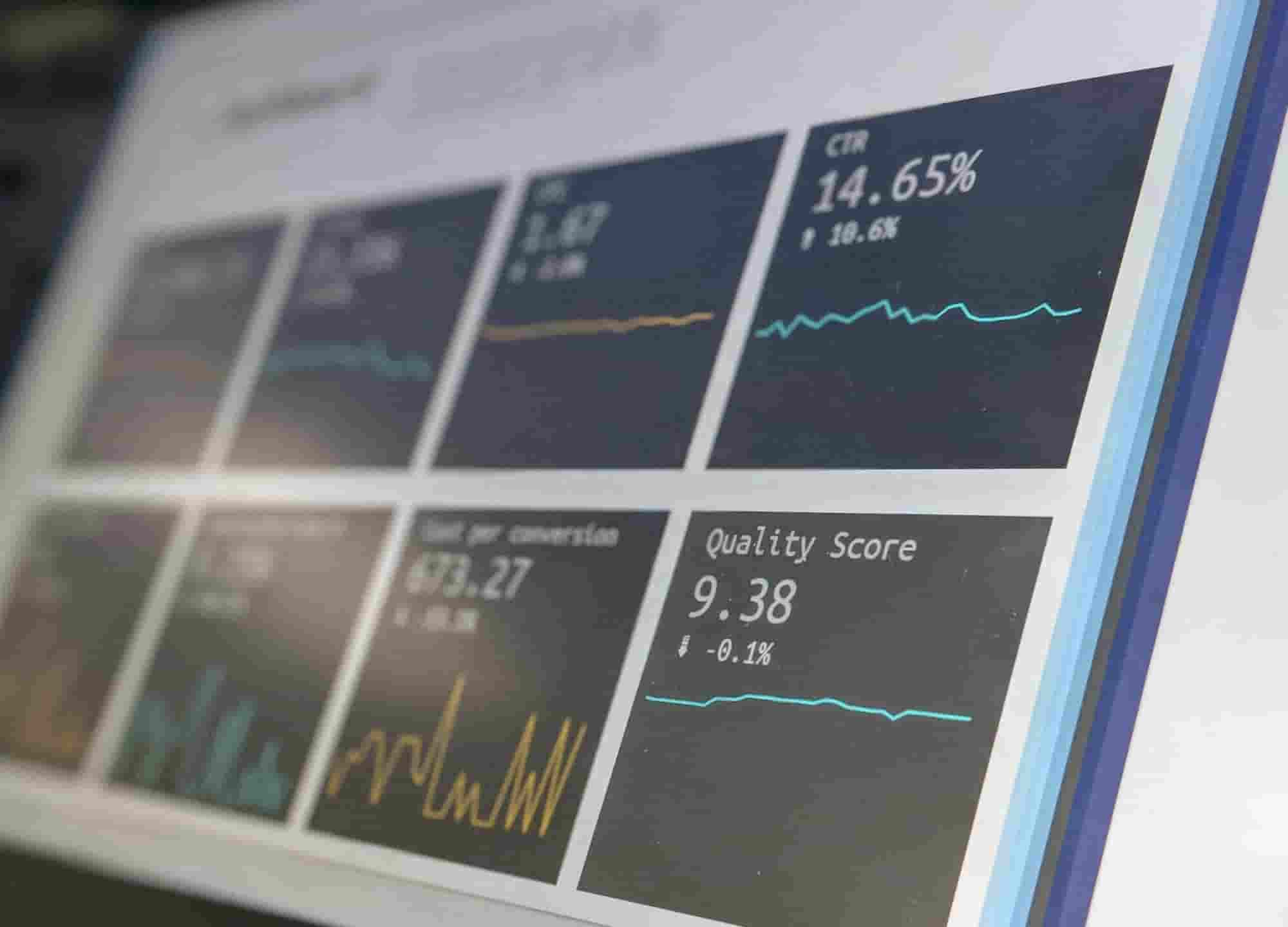
Though we spend ample time examining consumer-based AR endpoints, considerable adoption and impact are demonstrated today in the enterprise.
This takes many forms including data visualization in corporate settings, or software to create customer-facing AR experiences for brands (B2B2C). ARtillery Intelligence’s market sizing factors all these spending categories. But the greatest area of enterprise AR impact today is realized in industrial settings.
These use cases include AR visualization to support assembly and maintenance in manufacturing contexts. It can also include visual guidance (in both mobile and headwork form factors) for IT field support. The idea is that AR’s line-of-sight orientation can make front-line workers more intelligent and empowered. Compared to the “mental mapping” they do with 2D instructions, visual support makes them more effective.
This effectiveness results from AR-guided speed, accuracy, and safety. These micro efficiencies add up to worthwhile bottom-line impact when implemented at scale in industrial operations. Macro benefits meanwhile include lessening job strain and the “skills gap,” which can help preserve institutional knowledge.
For example, AR leader PTC reports up to 40 percent improvements in new employee productivity, 30 percent greater first-time fix rates, 50 percent reductions in training costs, and 25 percent reductions in materials scrap.
But it’s not all good news. Though all these benefits are valid, it’s challenging to get to the point of realizing them. Practical and logistical barriers loom, including organizational inertia, politics, change management, and fear of new technology among front-line workers.
Sticking with some of those organizational hurdles, the biggest symptom is the dreaded “pilot purgatory.” As its name suggests, this is when AR is adopted at the pilot stage, but never progresses to full deployment. It’s one of industrial AR’s biggest pain points today.
ARtillery Intelligence has identified sources and solution areas for pilot purgatory. Known as the “3 Ps,” they include people, product, and process. These are the areas where effective AR implementation strategies should focus (explored later in the report).
With that backdrop, we continue the narrative in this report on enterprise AR, including new ARtillery Intelligence market sizing data. Moreover, we devote the bulk of this report to “show rather than tell.” We’ll do this through case studies that demonstrate enterprise AR’s ROI potential and best practices.
To adequately represent these factors, we’ve reached out to leading enterprise AR players to collect their top case studies. We’ve then relayed these through our own lens and analytical rigor. We’ve prioritized case studies that have quantifiable results, actionable takeaways, and a wide range of business verticals.
The goal in all the above is to reveal the why and how of enterprise AR. Through the lens of industry best practices, why should enterprises invest in AR? And how should it be implemented? The name of the game is to set up enterprise AR to succeed by deploying it from a place of confidence and knowledge.



The fastest and most cost-efficient way to get access to this report is by subscribing to ARtillery PRO. You can also purchase it a la carte.
This report highlights ARtillery Intelligence viewpoints, gathered from its daily in-depth market coverage. To support narratives, data are cited throughout the report. These include ARtillery Intelligence’s original data, as well as that of third parties. Sources are linked or attributed in each case.
For market sizing and forecasting, ARtillery Intelligence follows disciplined best practices, developed and reinforced through its principles’ 17 years in tech-sector research and intelligence. This includes the past 7 years covering AR & VR exclusively, as seen in research reports and daily reporting.
This approach primarily applies a bottom-up forecasting analysis, secondarily vetted against a top-down analysis. Together, confidence is achieved through triangulating figures in a disciplined way. More about our methodology can be seen here, and market-sizing credentials can be seen here.



Unless specified in its stock ownership disclosures, ARtillery Intelligence has no financial stake in the companies mentioned in its reports. The production of this report likewise wasn’t commissioned. With all market sizing, ARtillery Intelligence remains independent of players and practitioners in the sectors it covers, thus mitigating bias in industry revenue calculations and projections. ARtillery Intelligence’s disclosures, stock ownership, and ethics policy can be seen in full here.
Checkout easily and securely.
Ask us anything









